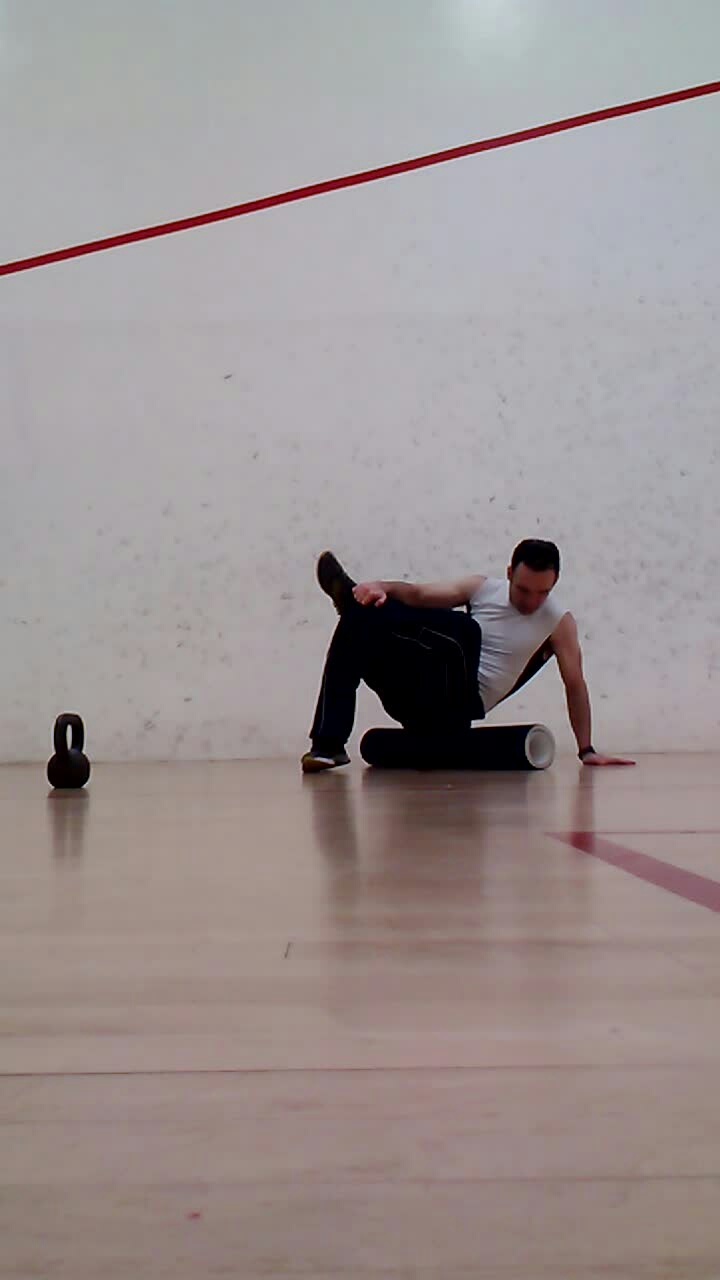Proper weight training for martial arts
Proper weight training for martial arts, or anything else, primarily aims to increase strength for enhanced performance. With that being said, sports training often reveals other physical issues requiring attention while strength is enhanced. As such, conditioning and therapeutic concerns are often included in the realm of strength training for martial arts.
In order to address these considerations, a circuit type weight training program often results; but before the program is detailed, how to fulfill the aforementioned criteria should be addressed.
Increased Strength
Increased strength requires muscular tension that is near or at peak levels in order to stimulate strength gain. As such, exercises, weight, reps, and frequency should all focus on maximizing muscular tension.
Contrary to some belief, sufficient tension is usually not realized mimicking sport while holding weights (i.e. punching with dumbbells). Such movements often place joints in less than ideal positions for force production and/or resist the wrong muscle-groups.
Pushing, pulling, and squatting movements with durable default form are best for weight training for martial arts. These movements are efficient at addressing all the major muscle groups; and having safe default form focuses effort on force rather than position.
Weight, reps, and frequency should allow for sufficient force but keep fatigue to a minimum.
So, because you can't crush a can against a curtain, sufficient load is needed. Note, however, maximum weight induces fatigue so use the minimum weight necessary for peak muscular force. Such loads allow for peak tension with minimal fatigue if they're pushed and pulled hard enough.
As is the case with weight, reps and frequency should also be organized to keep fatigue down. Such fatigue management usually entails low reps, sufficient rest between sets of a given an exercise, and inter-workout interval that allows muscles full recovery of force potential.
Adjusting load, reps, and frequency reflectively based on force output during warm-ups (against non-depleting loads) is an effective way to ensure high force to fatigue ratio.
For example, if preparation work with easy/moderate loads is less forceful than usual, either end the session or continue with proportionally lighter loads. End the session if certain rest is needed or continue with light/moderate loads if additional preparation will yield higher force output.
Conditioning concerns
On the conditioning front, weight training for martial arts should focus on maximizing work per unit time without sacrificing force output. So work rate should only be increased if force output is maintained. Otherwise, the strength promoting stimulus is compromised.
Such condensing off work while keeping force hi/fatigue low are partly accomplished with the load, rep, and frequency recomendations stated above. In order to increase work rate, though, work can be continued for muscle groups other than those resting between sets. When done correctly, such work alternation among unrelated muscle groups can keep work rate high and individual muscle fatigue low.
Again, like stated above, adjust rest between circuit-rounds based on performance. Performance can be determined by observing times. If rounds slow too much, rest more between rounds.
Therapeutic issues
To address therapeutic issues, factors like mobility needs and muscular imbalances should be considered in weight training for martial arts. Attention to range of motion and integrating postural exercises addresses most of the aforementioned needs. The following circuit includes therapeutic exercise as well as strength exercises that address strength over a functional motion range.
An example circuit in weight training for martial arts
The following circuit is meant to be done no more than three days per week. Because the exercises are depicted below, we'll just discuss the load, rep, set and frequency recomendations here.
The load for prone reverse flyes will be 10 percent of the chest press weight for 12 reps per set. The prone side leg lifts on the ball are unloaded for 20 reps each leg per set.
The rest of the exercises utilize 8 rep max loads for 3 reps per set pushing/pulling as hard as possible.
-Time how quickly the collective completion of 1 set of each exercise can be completed (i.e. after 1-3 easy warm-up rounds with escalating loads for time, rest sufficiently, start your stopwatch again, complete 1 set of each exercise as quickly as sound execution requires, then stop the stopwatch and log the time).
-Rest 1-3 minutes, and if certain you can do better, repeat.
-Once you reach efficiency limits, add the smallest increment of weight to each exercise. (Only when you're at the upper-limit of your strength potential do you experiment with doing multiple circuits with compressed rest; and, even then, such measures shouldn't be implemented at the expense of force output!)
One arm Prone reverse flies
 |
 |
Bulgarian split-squats
 |
 |
One arm chest press
 |
 |
One arm opposite leg dumbbell row
 |
 |
Prone hip-abduction off the ball
 |
 |
Knee-up
 |
 |
Give this circuit a try by either replacing a full-body session with it or adopting it all together. I guarantee you'll make progress!